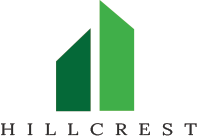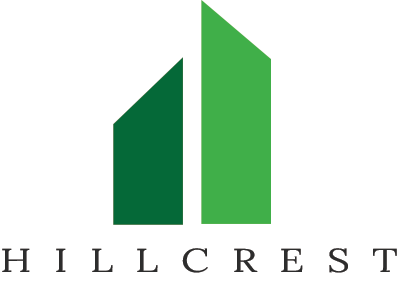Every condominium association has a set of condo rules and regulations. These rules exist to maintain order, ensure quality of life, and protect property values. Unit owners must understand these rules and learn to abide by them.
What are Condo Rules and Regulations?
Condo associations are governed by a set of documents known as the governing documents. The rules and regulations, also known as the operating rules, are one of them.
Condo rules and regulations govern the use of the building and its common areas. These rules also govern the behavior of residents and prohibit activities that might jeopardize the community.
Most Common Condo Rules and Regulations
Rules and regulations can vary from one association to another. This is why unit owners should refer to their condominium’s governing documents to understand their specific rules. That said, there are condo rules that apply to a lot of associations.
Here are the most common condo association rules.
1. Architectural Rules
 Many condominiums have architectural guidelines – rules that dictate what owners can and can’t do to the exterior of their units. Sometimes, these rules can even extend to the interior of their units.
Many condominiums have architectural guidelines – rules that dictate what owners can and can’t do to the exterior of their units. Sometimes, these rules can even extend to the interior of their units.
These rules exist to maintain a uniform appearance within the community. After all, aesthetics matter a lot when it comes to curb appeal and property values. Owners must often ask for approval before making any modifications, additions, or improvements.
2. Holiday Decoration Rules
Condo associations often have holiday decor rules to preserve the community’s appearance. These rules dictate when owners can put up decorations and when they should remove them, and they also detail what types of decorations are permitted.
 3. Noise and Nuisance
3. Noise and Nuisance
Everyone has a right to quiet enjoyment of their property. To protect this right, many condo associations have noise or nuisance rules. These rules prevent residents from making too much noise or from making noise during certain hours of the day.
4. Pet Policies
 A lot of condo associations have pet policies. Some allow only a certain number, type, or breed of pets, while others don’t allow pets at all.
A lot of condo associations have pet policies. Some allow only a certain number, type, or breed of pets, while others don’t allow pets at all.
Typically, a condominium that allows pets also has additional rules concerning pet behavior, safety, and registration. Condominiums would require owners to register their pets with the association.
Pet rules also require owners to clean up after their pets, keep them on a leash in common areas, and ensure they don’t make too much noise.
5. Rental Restrictions
Rental restrictions are typical among community associations, including condominiums. These restrictions either prohibit rentals altogether or place reasonable restrictions on them. Examples include rental caps, minimum duration of rentals, and tenant screening.
Rentals, particularly short-term rentals, pose particular risks to condo associations. For one thing, residents feel less safe in their community when strangers are constantly flowing through.
There is also the issue of insurance, as some providers are hesitant to offer coverage to an association with many rentals.
6. Parking and Vehicles
Condo associations tend to have limited parking spaces available. Rules make it easier to regulate parking, including guest parking, and ensure vehicles are not abandoned.
 7. Maintenance Standards
7. Maintenance Standards
Associations usually require owners to care for their units, ensuring proper maintenance and repairs. For instance, if an owner’s broken window is visible from the outside, the condo may require the owner to fix or replace the window to avoid impacting appeal and property values.
8. Property Use Restrictions
Many condominium associations prohibit owners from using their units as commercial spaces. This is not only a matter of zoning but also of maintaining the community’s character.
What Happens When Condo Rules and Regulations are Violated?
Condo residents must adhere to the association’s rules and regulations. Violating these rules can have several consequences.
Residents with violations could face a monetary penalty after a disciplinary hearing. In some communities, the condo board can even decide to suspend the member’s privileges or access to amenities temporarily. In more extreme cases, legal action can even be taken.
Declaration vs Condo Bylaws vs Rules and Regulations
The operating rules of a condominium differ from the bylaws and the CC&Rs. While all these fall under the governing documents, they play different roles. Of course, a condo’s rules’ contents must still align with the declaration and the bylaws.
What is a Condo declaration?
The Declaration of Covenants, Conditions, and Restrictions (CC&Rs) is the primary document establishing the condominium. It contains the legal rights and responsibilities of the condo association and its members.
The purpose of the condo declaration is to outline property use restrictions, maintenance obligations, architectural guidelines, and more. It consists of broader strokes, whereas the operating rules are more specific. The rules and regulations expound on the CC&Rs.
What are Condo Bylaws?
The condominium bylaws govern the structure and operation of the association. They contain information regarding board meetings, elections, board terms, voting procedures, and the like. The bylaws are more about the management of the association than the rules that govern it and its members.
How to Get Condo Bylaws and Other Documents
Owners typically receive a copy of the governing documents when purchasing their unit. These documents come packaged with other disclosures during the sale.
Potential buyers should ask their seller or seller’s agent to provide a copy of the association’s governing documents. This way, they can review the condo’s rules and covenants before finalizing the purchase.
Existing owners can ask the condo board or manager for a copy of the governing documents. According to 765 ILCS 605/19, owners have a right to inspect, examine, and make copies of the association’s records, including the CC&Rs and bylaws. The association must comply with such a request within 10 business days.
Remember that the condo association can charge a fee to cover the actual examination cost. Not all records are also open to inspection, as some may contain sensitive or personal information.
A Two-Way Street
Unit owners must familiarize themselves with their condo rules and regulations. Failure to adhere to these rules can result in fines and other penalties, and ignorance is not an excuse. On the other hand, board members should educate residents and keep them updated on any policy changes.
Hillcrest makes condo association management a breeze. Call us today at 630-627-3303 or contact us online to request a proposal!
RELATED ARTICLES:
- The Problem Of HOA Not Enforcing Rules And Selective Enforcement
- Can The Police Enforce HOA Rules?
- Is An HOA Rental Cap A Good Or Bad Thing?





